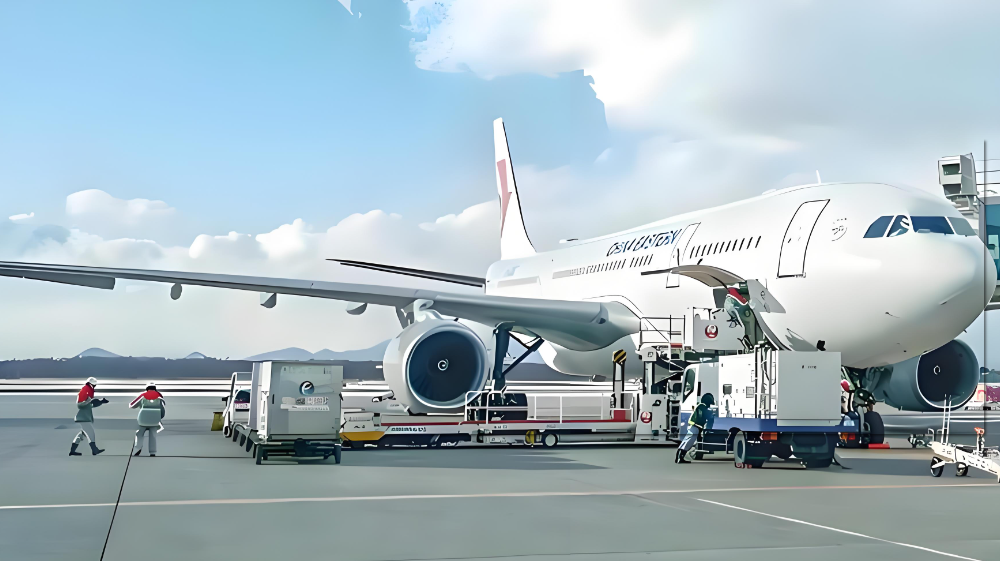Author:HAIYUAN TIME:2025-06-28Read:
Shipping clothing from China to the US involves several steps and choices. Here's a clear guide covering methods, costs, documentation, and key considerations:

Air Freight:
Best for: Small/urgent shipments (under 500kg), samples, high-value fashion.
Pros: Fast (3-8 days), reliable tracking.
Cons: Expensive (charged per kg or volumetric weight), less eco-friendly.
Options: Door-to-door (simplest), airport-to-airport (cheaper, need customs broker).
Sea Freight:
Best for: Large volumes (over 1-2 CBM), bulk orders, low-to-mid-value items.
Pros: Cost-effective per unit (charged per CBM or container), eco-friendly.
Cons: Slow (20-40+ days), complex logistics.
Options:
LCL (Less than Container Load): Share a container. Pay per CBM + fees. Good for smaller shipments.
FCL (Full Container Load): Rent entire container (20ft/40ft). Cost-effective for large volumes.
International Courier (DHL, FedEx, UPS):
Best for: Very small parcels (<70kg), urgent samples, B2C.
Pros: Extremely fast (2-5 days), door-to-door, easy tracking.
Cons: Very expensive for bulk, weight/size limits, may attract customs scrutiny.
Postal Service (China Post, ePacket, EMS):
Best for: Very small, low-value B2C parcels (<2kg).
Pros: Cheap, simple (often no formal customs entry under $800).
Cons: Slow (15-45+ days), limited tracking, risk of loss/delay, not for commercial bulk.
Freight Charge: Based on weight (air/courier) or volume (sea).
Origin Charges: China export fees, documentation, handling, trucking to port/airport.
Destination Charges: US customs clearance, duties & taxes, port/airport fees, delivery trucking.
Duties & Taxes:
US Import Duty: Varies by clothing type (HTS code). Average duty for apparel is ~11.5% (cotton often higher, synthetics lower). Use the USITC HTS lookup tool.
Sales Tax: Collected by most states upon delivery/clearance.
De Minimis: Shipments valued under $800 generally enter duty/tax-free via most courier/postal methods (commercial shipments included).
Insurance: Highly recommended (1-3% of goods value).
Commercial Invoice: MOST CRITICAL. Must include:
Packing List: Itemized list of contents per package/carton (quantities, weights, dimensions).
Bill of Lading (Sea) or Air Waybill (Air): Contract with carrier. "Telex Release" common for FCL.
Certificate of Origin: Sometimes required for duty preferences (rare for China-US).
Textile Declaration: May be required for customs.
ISF Filing (Sea Freight Only): Importer Security Filing (10+2 data) must be submitted to US Customs at least 24 hours before loading in China. Your freight forwarder usually handles this.
Labeling Compliance: US clothing MUST have permanent labels showing:
Fiber content (e.g., "100% Cotton")
Country of Origin ("Made in China")
Care instructions (washing, drying symbols/text)
FTC RN number (if applicable)
Quotas & Restrictions: While most quotas are gone, certain items (e.g., cotton underwear) may have safeguards. Verify HTS codes.
Material Restrictions: Ensure fabrics comply with US regulations (e.g., flammability standards - 16 CFR Part 1610, lead/phthalates in childrenswear - CPSIA).
Counterfeits: Shipping counterfeit branded goods is illegal and will be seized.
Quality Control: Inspect goods before shipment to avoid costly rejections.
Freight Forwarder: Highly recommended (especially for sea/air). They handle logistics, documentation, customs clearance, and provide quotes. Choose one experienced in textiles/apparel.
Get Quotes: Contact 3-4 freight forwarders. Provide: Origin/Destination, shipment details (weight, volume, # cartons, value), Incoterms preference.
Book & Prepare: Confirm booking with forwarder. Ensure goods are properly packed, labeled, and QC'd.
Provide Docs: Submit accurate Commercial Invoice, Packing List, and any other required docs to your forwarder.
Origin Handling: Forwarder arranges pickup, export customs, and loading.
Transportation: Goods move via chosen method (sea/air/courier).
US Customs Clearance: Forwarder/broker files ISF (sea), submits entry docs, pays duties/taxes (you reimburse unless DDP), clears goods.
Final Delivery: Goods transported from port/airport to your US warehouse.
Summary: Choose the method based on volume, urgency, and budget. Sea freight (LCL/FCL) is best for cost-effective bulk. Air freight balances speed and cost for medium shipments. Couriers are for speed/small parcels. Documentation accuracy (especially HTS codes and invoice value) is paramount. Partner with a reliable freight forwarder and ensure US labeling compliance to avoid delays and penalties. Always factor in duties and taxes based on your goods' HTS code.
As a leading manufacturer of workwear and protective equipment in China. Our company can provide customers with different types of Workwear. You can choose styles directly from our website. In addition, if you have customized style design drawings, we can provide OEM service for you.
Back to Top
+8619948039507
